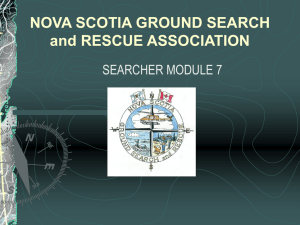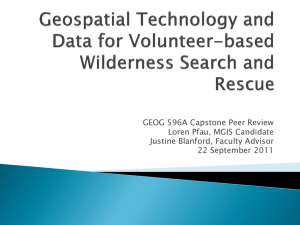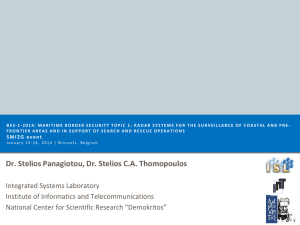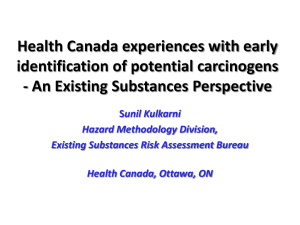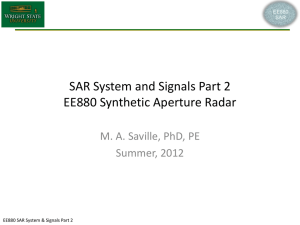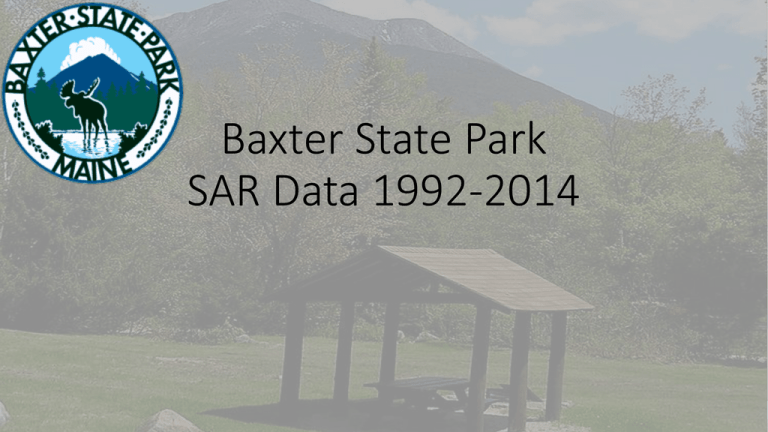
Baxter State Park
SAR Data 1992-2014
Chris Welter
Tufts University School of Medicine
BSP Medical Directors
Dr. Steve Diaz
Dr. Matt Scholl
Chief Ranger Ben Woodard
…Many recreation areas include both areas that are easily accessible by car and areas
that are remote, without easy vehicular access. These sites attract visitors with a wide
range of health statuses, ranging from those with high levels of fitness to those with
multiple chronic health conditions. In addition, many of the recreational activities that
park visitors engage in are associated with some degree of risk of injury. For example,
hiking is an activity not typically associated with a high degree of risk; however, it is the
wilderness activity most commonly associated with a need for a search and rescue
(SAR) event.
When coupled with poor cellular service coverage, a lack of essential supplies, the
increasing burden of chronic disease and no access to definitive care, hiking-related
injuries can become serious threats to health and survival.”
Age vs. SAR incidence
Age Comparison to other Literature
30%
25%
20%
3 Canada
4 New Hampshire
6 SAR Nat Parks
15%
Baxter
10%
5%
0%
0-9
10-19
Mean Age BSP SAR Incidents: 39 years
20-29
30-39
40-49
50-59
60+
Age vs. Baxter Park Use Demographics
(SAR data 1992-2014, Park Use from Spring, 2006)
25%
20%
15%
SAR
Park use
10%
5%
0%
<10
10-19y
20-29y
30-39y
40-49y
50-59y
60+
Demographics
SAR Victims by sex compared to other Literature
100%
90%
80%
70%
60%
Male
50%
Female
40%
30%
20%
10%
0%
National Parks
New Hampshire
Canada
Baxter
30.00%
25.00%
SAR Need
20.00%
15.00%
10.00%
5.00%
0.00%
“Many visitors to Baxter State Park, home of
Maine’s highest peak, Mt. Katahdin, aspire to
summit the mountain and often underestimate
the physical conditioning and supplies necessary
for navigating the rugged terrain.”
Total
45
40
SAR Secondary Problem (if present)
35
30
25
20
Total
15
10
5
0
“Fatigue emerged as an important precipitant to search and rescue
events within Baxter State Park.
Approximately 20% of all search and rescue responses, a full 66%
of responses for medical issues, were due to visitor fatigue.”
“While we anticipated that visitors experiencing fatigue would be
of older age than those who did not experience fatigue, we were
surprised by how much older – approximately 9 years – fatigued
visitors were.”
“This information may help to target educational interventions
regarding the physical stamina, adequate nutrition and hydration,
rest periods, and other preparation necessary for older hikers to
successfully navigate Baxter’s mountainous terrain.”
100
90
80
Ascending Vs. Descending Mountain
70
60
Going up is voluntary, coming down is mandatory….
50
down
40
up
30
20
10
0
Fatigue compared to other Literature
Fatigue etiology of all SAR events *
(* imperfect comparison criteria)
Rough, rooty, rocky and steep…
25.00%
20.00%
15.00%
10.00%
5.00%
0.00%
3 Canada
5 Alaska
6 SAR NP
7 Yosemite
8 SAR US NAT
10 Utah
avg
Baxter
Total
600
500
400
300
200
100
0
Activity when SAR became Needed
“FATALITIES
During the study period, 19 fatalities (19/754, 2.5% of all search and rescue
responses) occurred in the park. Of those, 11 (57.8%) were due to medical
emergencies 3 (15.8%) were suicides, 2 (10.5%) were the result of traumatic
injuries sustained by visitors, 2 persons drowned (10.5%), and one visitor
died following a lightning strike (5.2%).
Myocardial infarction was the most common cause of death (n=9, 47.3%).
The mean age of those who died in the park was 45.3 years while the mean
age for those who survived was 38.7 years.”
Month of Incident
Month of SAR
30.00%
25.00%
Canada
20.00%
NH
15.00%
Baxter
10.00%
5.00%
0.00%
Jan
Feb
Mar
Apr
May
Jun
Jul
Aug
Sep
Oct
Nov
Dec
Total
350
Evacuation Technique
300
250
200
150
100
50
0
no effort- no
walked out on own
stretcher,
assistance walking, power, assisted snowmobile, small
got in car, or got
boat, or other
ambulance
small-team carry
helicopter evac
litter evac
both litter and
helicopter evac
SAR events and park use per year (1992 and
2014 are incomplete years)
80
SAR incidents and park use vs. year
70
60
50
40
30
20
10
SAR incidents
Park use (in thousands)
0
1992 1993 1994 1995 1996 1997 1998 1999 2000 2001 2002 2003 2004 2005 2006 2007 2008 2009 2010 2011 2012 2013 2014
Percentage of SAR needing helicopter
Percent SAR needing helicopter
45%
40%
35%
30%
25%
20%
15%
10%
5%
0%
Percent SAR needing litter, heli, or both
90%
80%
70%
60%
50%
40%
30%
20%
10%
0%
SAR Summary
- What are the chances???
Visitor days requiring Litter, heli, or both
Total People requiring litter, heli, or both
% per 100,000
0.004%
3.6
0.007%
6.8
Visitor days requiring stretcher, snowmobile, boat, or other small team carry
0.002%
2.3
Total people requiring stretcher, snowmobile, boat, or other small team carry
Visitor days requiring little to no evac effort
Total people requiring litter, heli, or both
Visitor days requiring SAR in any form
Total people requiring SAR in any form
0.004%
4.4
0.021%
0.040%
21.4
40.1
0.027%
0.051%
27.4
51.2
Take Home Points:
Train and Communicate for Prevention:
•
Older demographic
•
Fatigue “One of the most strenuous day hikes in New England”
•
Suicide Potentials – recognition/response
Train for Treatment:
•
Fatigue
•
Lower extremity injuries
•
Myocardial infarctions
Train for Consistent Reporting




